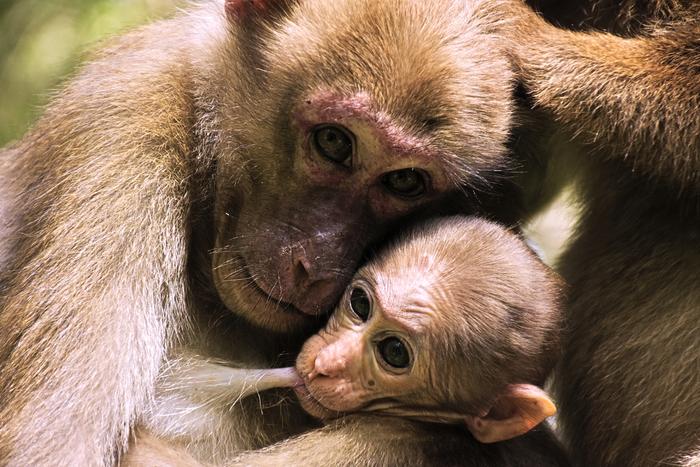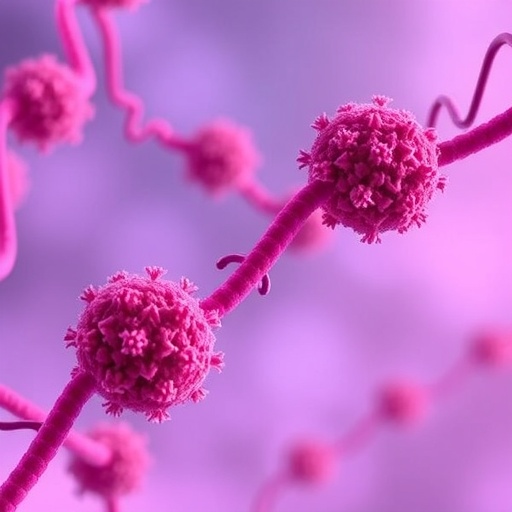In a groundbreaking study that sheds light on the long-term implications of prenatal stress, researchers have revealed that maternal stress hormone levels during early pregnancy can significantly affect the stress systems of offspring later in life. This research, conducted by a team from the University of Göttingen and the German Primate Center, focuses on wild Assamese macaques in Thailand and has been published in the prestigious journal, Proceedings of the Royal Society B. The findings underscore the critical role that early life stages play in shaping the health and behavior of primates, including humans.
The research indicates that the timing of maternal stress is crucial, particularly during the first half of pregnancy. The study highlights that elevated stress hormones, particularly glucocorticoids, experienced by mother macaques during this early phase, can lead to persistent alterations in their offspring’s hypothalamic-pituitary-adrenal (HPA) axis, the central system involved in the body’s response to stress. The implications of these findings extend beyond academia, suggesting that even moderate environmental stressors can have profound effects on developmental health.
Researchers collected extensive data over nine years, meticulously observing the macaques in their natural habitat rather than in a controlled laboratory environment. This observational approach allowed the team to gather accurate insights into how environmental factors—such as food shortages, temperature fluctuations, and social dynamics—affect the stress levels of pregnant mothers and, consequently, their offspring. By analyzing fecal samples for glucocorticoid metabolites, the team was able to correlate maternal stress with various health outcomes observed in the young macaques as they matured.
The results showed that those offspring subjected to higher levels of maternal stress during early pregnancy exhibited increased HPA axis activity, suggesting heightened sensitivity to stressors throughout their lives. This response persisted into adulthood, prompting researchers to consider how similar mechanisms might operate within human populations. The findings align with a growing body of literature emphasizing the importance of prenatal environmental influences on long-term physical and psychological health.
Contrasting their observations with previous laboratory studies, this research highlights the differences in results when studying animals in natural settings. While laboratory studies often focus on controlled environments where variables can be tightly regulated, this field study reveals the complexities and realities faced by wild animals. It emphasizes the necessity of context in understanding stress responses and development, suggesting that laboratory findings may not always translate directly to wild conditions.
The implications of this study reach into the realm of human health as well. The researchers argue that maternal stress during critical periods of development can lead to chronic stress responses in children, potentially increasing the risk for mental health disorders and immune system dysfunction later in life. Importantly, this research points to the fact that the timing and nature of stressors are critical; adverse effects can occur without catastrophic events, as even mild to moderate changes in environmental conditions may prove sufficient to elicit significant changes.
This comprehensive exploration into maternal stress and its ramifications extends our understanding of how early life experiences shape long-term health outcomes. By illuminating the interplay between environmental conditions, maternal health, and offspring development, the researchers lend credence to the idea that preventative steps taken during pregnancy may be pivotal in ensuring better health trajectories for children.
The study by Simone Anzá and colleagues not only contributes valuable data to the field of primate research but also lays the groundwork for potential translational applications in healthcare. As awareness grows about the importance of prenatal care and stress management, these findings could inform public health interventions aimed at reducing stress during pregnancy, ultimately enhancing both maternal and child health.
By identifying critical periods for intervention, this research fosters hope that improvements in maternal care can lead to healthier outcomes for future generations. The kinship between maternal well-being and the health of offspring cannot be overstated; greater awareness of these connections can inspire a holistic approach to maternal health.
In conclusion, the findings from this long-term study provide crucial insights into prenatal development, stress, and their implications for the HPA axis in mammals. They point toward the necessity of focusing on maternal mental health and the surrounding environment during pregnancy, advocating for comprehensive support systems for expectant mothers. As scientists continue to unravel the complex interplay between stress and development, the possibility of mitigating long-term health risks through early intervention becomes increasingly plausible.
The implications of this research are vast, not only for understanding wild primate populations but also for improving public health outcomes. Efforts to minimize stress in pregnant women could have lasting impacts, leading to healthier, more resilient individuals in the decades to come. As the scientific community digests these findings, the call for a broader application of this knowledge across species, including humans, is clear.
In today’s world, where stress levels are escalating due to various societal pressures, understanding the foundational role of prenatal stress becomes increasingly vital in our quest for a healthier global population.
Subject of Research: Animals
Article Title: Early prenatal but not postnatal glucocorticoid exposure is associated with enhanced HPA axis activity into adulthood in a wild primate
News Publication Date: 22-Jan-2025
Web References: DOI Link
References: N/A
Image Credits: Photo: Thawat Wisate
Keywords: maternal stress, HPA axis, Assamese macaques, prenatal development, glucocorticoids, environmental influences, public health
Tags: Assamese macaqueschronic stress responsesdevelopmental health outcomesenvironmental influencesglucocorticoidsHPA axishypothalamic-pituitary-adrenal axis activitylong-term consequencesmaternal stressnatural habitat researchprenatal developmentPublic health





